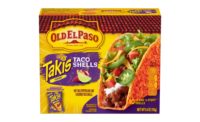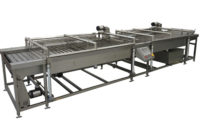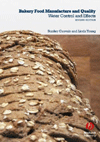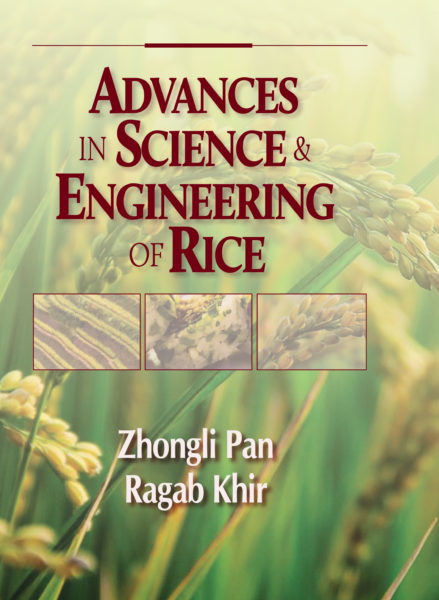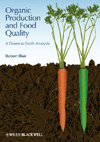“Some of them are making do with what they have,” confirms Jim Diver, vice president of operations, Dunbar Systems, Lemont, Ill. “This may be due to economic uncertainty, a lack of financial funding or corporate indecision. The successful companies in today’s market purchase new systems and move toward additional systems as we speak.”
Jerry Barnes, senior vice president, engineering, Baker Thermal Solutions, Clayton, N.C., agrees: “There remains a lot of turmoil in the market due to stagnant consumption rates, mergers and acquisitions and tight margins. Domestically, we are seeing many customers looking for methods and innovations to enhance their installed base. This is one area we are heavily focused on at the moment.”
Although its business is steady, Stewart Systems Inc., Plano, Texas, is also finding that the economic outlook and lack of capital is making buyers hesitant about investing in new equipment. “For this reason, Stewart offers many equipment upgrades and retrofit kits, as well as after-sales service and preventative inspections to extend equipment lifespans,” says national account and marketing specialist Dave Machette.
But the economy and cash flow may not be the only factors prompting bakers and snack producers to delay buying new equipment. “The logistics to replace an existing oven and/or proofer with the pressures of 24/7 production hours could be a reason why customers are making do,” says Ashley Morris, The Netherlands-based Kaak Group’s area sales manager for United Kingdom, Poland, North America and Australasia.
However, some bakers realize that the old methods they’re using are reducing their overall profit margins. “An inefficient oven is inefficient forever,” points out Cindy Chananie, president of Cinch Bakery Equipment, Clifton, N.J. “Depending on the size of the oven, the return on investment (ROI) for a new oven can be seen in just a few years.”
Features they want
Bakers and snack producers in the market for a new oven, proofer or fryer have definite ideas about the features they want in their new machinery and are relaying their requirements to equipment manufacturers.
“Flexibility, repeatability, high utilization and ease of use are the messages I hear most,” says Barnes. “A growing number of customers have implemented data-acquisition techniques to profile their installed ovens.” This involves using heat-resistant data loggers to record temperatures within the oven and dough to observe the oven’s performance and how the dough develops.
“Together with our partners on the ingredients side, we are working to provide the flexibility required to bake a wide variety of products,” says Barnes. “This involves a deeper understanding of the mechanisms for the conversion of dough to bread, and the ability to better control those mechanisms.”
Repeatability involves many facets, Barnes notes, including minimizing setup differences between ovens in the same or different facilities and achieving the same baking characteristics on the same product in the same oven, day in and day out.
Baker Thermal Solutions addresses ease of use (operations and maintenance) and high utilization through predictive maintenance features and tools, such as additional instrumentation on its redesigned 960 tunnel oven.
“Some plants are having issues with turnover and personnel training, so they’re asking us to implement diagnostic tools that allow them to troubleshoot or foresee problems to stay on top of potential issues that may be coming up,” Barnes explains.
“In addition, we’re looking to additional instrumentation that can give real-time indication of performance. We’re trying to stay ahead of the curve rather than always being in a reactive mode. We’re trying to help the end user predict when maintenance should occur.”
According to Morris, “Oven temperatures, baking quality and characteristics, increased efficiency and heat-recovery systems are now keywords used by our customers when considering the purchase of a new oven.
“Increasing efficiency and rationalization has been the subject of discussion in bakeries for years. Today, proofing temperature/humidity targets and directional and complete airflow coverage are now more standard than optional. Sanitation has been discussed for some time, as well. However, its importance within bakeries has ensured that manufacturers of bakery machinery have made it one of the key design criteria for proofers and ovens.”
Because sanitation will always be a key issue for food and equipment manufacturers alike, demand for easy-to-clean machinery will continue to grow. “Many customers are looking at improving the access to the baking chamber for sanitation,” says David Kuipers, vice president of sales and marketing at Reading Bakery Systems, Robesonia, Pa.“Many have expressed concerns about sanitation and allergens. We provide several hinged access doors as standard and can provide many more as options.”
C.H. Babb Co. Inc., a commercial tunnel oven manufacturer in Raynham, Mass., hears more customers ask about hybrid units. “Their various technologies—direct-fired, indirect-fired, radiant, convection—all in the same ovens,” president Charles Foran explains. “The beginning of an oven may be one technology and end of an oven another technology.”
Foran says today’s customers are also interested in energy savings. “That’s the first thing out of people: ‘What’s the energy savings of your oven versus my old oven? How much am I going to save? What type of technology gives me the best savings?’ We work with that constantly,” he says.
Like other companies, C.H. Babb Co. is also seeing increased interest in easier oven sanitation and maintenance. “The older ovens—[product] came in one end and went out the other,” says Foran. “Nobody knew what was going on in the middle. Now, ovens have doors for easier sanitation and more clean-in-place (CIP).”
Today’s baking equipment manufacturers are introducing new and redesigned ovens, proofers and fryers that will address these needs and more.
Ovens and proofers
Baker Thermal Solutions re-designed its 960 Direct-Fired Tunnel Oven. “We wanted to update the 960 across a range of requirements, one of which was to take advantage of modern manufacturing methods to address the changing marketplace,” explains Barnes. “We’re seeing a lot of growth internationally with the emergent market, so we wanted to be able to extend the range down to lower throughputs, lower capacities.”
The company is also seeing consumer demand for high-fiber products, more whole grains and healthier products “dramatically alter the bread production landscape,” he says. “Batch sizes and product runs become shorter, which requires more changeovers. Bake times are longer. More toppings are being used. Our focus is on optimizing the heat transfer to the product to bring those bake times back down, which in turn, improves output capacity. ”
The 960 comes with baking chambers up to 13 ft., 4 in. wide and 205 ft. long.; a choice of grid or plate hearth; an oven loader, unloader and main drive controlled by advanced format (AF) drives; an oven process control (OPC) with standard or advanced configuration; direct-spark ignition; integrated recipe management; product tracking; and more.
Cinch Bakery Equipment, meanwhile, introduced the Gashor Thermocar Oven, a combination rack/deck oven, to the U.S. market in January (the oven was available from Winkler GmbH in Germany in the 1990s. The company filed for bankruptcy in 2000). “Bakers like a traditional rack oven because they proof, bake and cool on the same rack and feeding a rack oven is as simple as pushing a rack into the oven—no loader is required,” explains Chananie.
“Unfortunately, the convection heat with rack-oven baking causes the product to dry, so the baking result isn’t ideal.
“A deck oven will provide an ideal bake, but now the baker needs to transfer dough from wooden peel boards to the loader, then load the oven, remove the product after baking and cool it on a separate rack—it’s labor-intensive. [With] the Thermocar, the baker can proof on racks and then slide those same racks directly into the [oven]. When baking is complete, the product is cooled on the same rack.”
The Thermocar is designed with the original Winkler cyclothermic heating system. Hot air flows inside closed radiators, so the air never comes in contact with the baking products. According to Chananie, the Thermocar removes labor issues and bakes product nearly the same as a traditional deck oven.
Dunbar Systems recently introduced the Auto-Bake Serpentine Super Flow oven to the North American market. To date, Auto-Bake ovens were thermal oil or electrically heated. The Super Flow oven is a direct gas-fired oven. Each of the oven’s three-burner heat independent zones offer better control over conventional oven technology, says Diver. “Each zone’s heat is transmitted to the baking chamber via perforated ducts introducing the heated air into the baking chamber,” he explains. “The results are an even bake of the product, finer temperature control, no lateral heat variation and reduced bake times.”
Auto-Bake also introduced new oven loading and unloading technology that allows bakers to use their existing conventional pans with the Auto-Bake system. Diver says the design reduces the initial cost of the Auto-Bake system when bakers convert from a conventional system to an Auto-Bake installation, as well as adds flexibility to the system.
As with all Auto-Bake systems, the new additions are easy to maintain due to their narrow footprint and straight-forward designs, Diver says.
Technology improvements
Two members of the Kaak Group—Daub Backtechnik GmbH, Hamburg, Germany, and MCS Srl., Ala, Italy, launched new ovens this spring, while a third—Kaak, Terborg, The Netherlands—introduced a new proofer in February.
Daub Backtechnik introduced Stonemotion, a thermal oil, stone-baking, multi-deck oven. Developed especially for small premium, craft and regional bakeries, Stonemotion’s thermal oil technology “comes very close to traditional wood baking ovens and ensures optimal baking results,” says Morris. “With the additional use of stone as a baking medium, the quality of the baking is excellent.”
The oven can be fully automated within existing production lines or used as a standalone, manual-feed unit. In addition, it offers short cycle times and has a compact design.
MCS added the Bakemaster T to its line of Bakemaster tunnel ovens. The high-capacity model features cyclothermic baking and a 14.4-ft.-by-147.6-ft. baking conveyor with eight baking zones, each with independent air temperature, air flow and moisture controls. More and larger side cleaning panels provide access to the bottom of each baking zone, while a custom-built suction head connected to an integrated vacuuming system facilities cleaning.
Meanwhile, Kaak, the origin of today’s Kaak Group, launched the Ultimate washdown proofer. According to Morris, the unit is manufactured almost entirely from stainless steel and has an open framework that eliminates areas with the potential for trapping product or other materials. It features a specially designed, integrated, two-stage cleaning and maintenance platform that facilitates cleaning by the sanitation team and enhances the safety of the equipment. Fully accessible vertical and horizontal airflow ducts also are easy to clean during washdowns.
C.H. Babb has been manufacturing tunnel ovens for nearly a century. Today, customers can choose from direct-fired, indirect-fired, air impingement, infrared, radiant tube, thermal oil, electric and hybrid models.
The company continually explores ways to improve its ovens, so its customers can produce quality baked goods, shorten their baking process and reduce their operating costs. To that end, C.H. Babb introduced clean-in-place (CIP) features, such as slanted floors and ducts routed to multiple drains, that facilitate quick and total washing out of all oven surfaces. Hybrid ovens, another C.H. Babb innovation, combine multiple baking methods to enable bakers to have control over every phase of the baking process and deliver maximum product quality.
“Stewart Systems is consistently looking for equipment improvements and designs that allow for maximum throughput, without sacrificing product quality and consistency,” says Machette. In addition to ovens, the company manufactures conveyors, coolers, proofers and other bakery-related machinery.
Its ovens and proofers offer a variety of benefits, including increases in overall air turnovers in its proofers; variable speed recirculation for better recipe flexibility and quick response to uneven production loads and other outside influences; better chain sanitation through multi-brush and air blow off systems; lubeless chains; automatic oven moisture control and/or monitoring; and an optional “cool mist” humidity system that allows for additional humidity in the proof box without adding heat, if desired.
Reading Bakery Systems manufactures a range of ovens for producing cookies, crackers, sheeted snacks, extruded snacks and pretzels. According to Kuipers, the company continues to make improvements based on needs common to its ovens, such understanding energy usage in the baking system (benchmarking) and targeting improvements; supplying oven modules pre-assembled at its factory to control manufacturing quality, reduce installation time and ensure performance; using Reading Thermal SCORPION 2 Data-Logging equipment to record baking conditions and recommend improvements; increasing the use of convection in the baking process to improve efficiency of baking process and reduce bake times; and recovering exhaust heat with Heat Exchangers to preheat combustion make up air in convection oven zones.
Flexible frying
Introduced this summer, the Libra Hybrid fryer evolved from Moline Machinery, L.L.C.’s all-electric Libra fryer, introduced in 2007. However, unlike its predecessor, the hybrid unit runs on electricity, gas or both, depending on which is more economical for the user.
“Electricity prices were more favorable in 2007 than today,” says David Moline, P.E., sales and marketing manager at the Duluth, Minn.-based company. “Energy prices have transitioned to where gas is a more favorable option. So we wanted to do something to take advantage of performance of the electric fryer and the economic efficiencies of a gas fryer, while still maintaining the Libra’s performance advantages [of more precise control and ease of sanitation].”
The Libra Hybrid has a continuously flat bottom and a single sump at the infeed that enabled the company to incorporate a sediment sweep conveyor for continuous sediment removal. “This is a big thing for yeast-raised donut producers,” Moline explains. “They’ll get starch in their proofers and flour on their product, which will inevitably carry over to their fryer. Oftentimes, people would have to sanitize their fryer up to twice a week, depending on the amount of sediment they’re introducing to their fryer kettle, because it would get to the point where it would build up. Without continuous sediment removal, it would build up to the point where it would cover the gas burner tubes and that can be dangerous from a fire hazard standpoint. The heat transfer goes to almost nothing, too, so your operating costs go through the roof.”
Moline adds that new frying oils, such as trans-fat-free oils, are also prompting the company to make sure that its fryers are compatible with continuous oil-polishing systems. “Oils break down differently and when you start getting different oils, they react differently to how they’re heated,” he explains. “If you’re not heating them properly, they’ll break down faster than you want them to. That’s where the equipment comes into play.”
Consumer food trends will continue to impact bakers and snack producers worldwide. Those willing to invest in the equipment needed to produce in-demand staples or treats quickly, efficiently and cost-effectively will thrive and bake another day.










